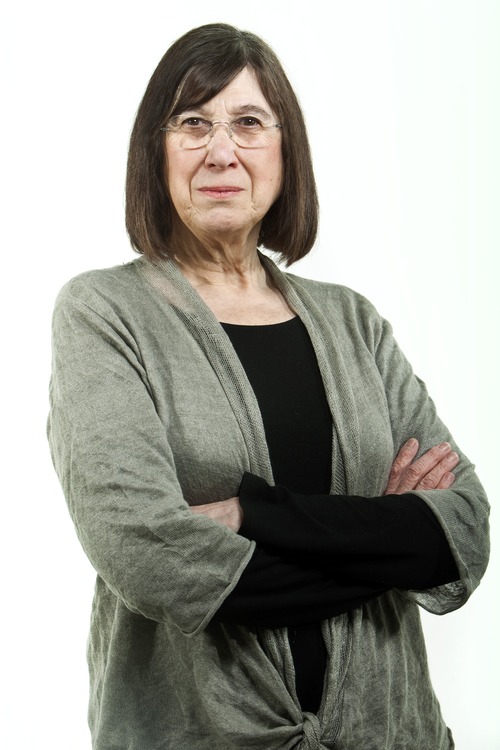This is an archived article that was published on sltrib.com in 2014, and information in the article may be outdated. It is provided only for personal research purposes and may not be reprinted.
In the 1860s, growing numbers of non-Mormons arriving in the Utah Territory posed a threat to Mormon autonomy. Retaliating against this new population they believed amoral, and to safeguard unity among Mormon people, LDS Church leaders adopted a resolution that its members be self-sustaining. By 1866, the ensuing acrimony between Gentiles and Mormons reached such heights that Gentiles feared for their safety and their lives, as late-19th-century attorney Robert Newton Baskin quickly discovered.
Born in 1837, raised Protestant and educated in law, Baskin stopped in the Utah Territory in 1865 en route to California. He toured Alta's silver and gold mines, saw mining's potential, and decided to settle in Salt Lake City and open a law office.
According to Baskin's memoirs, "Reminiscences of Early Utah," an early client was Dr. John King Robinson, retired assistant-surgeon with the California volunteers and a non-Mormon married to the daughter of former Mormon apostate John Kay.
Robinson planned to build a public hospital on vacant land near Warm Springs at the north edge of Salt Lake City. Shortly after constructing a small workshop, "a police force tore it down and warned the doctor it would not be healthy for him to renew his operations there," Baskin wrote.
Although non-Mormon friends feared reprisal and advised him against seeking counsel, Robinson met with the attorney to recover damages and sue for the land.
"I did not believe it possible anywhere in the United States that a citizen would jeopardize his life by applying to the courts for an adjudication in any case," Baskin wrote.
But he underestimated the risk.
Several weeks later on Oct. 22, 1866, Robinson was called out at midnight to assist a severely injured man. The doctor was assassinated on the corner of Main and 300 South.
Nearly 25 years later, an article in the Nov. 5, 1893, Salt Lake Tribune recalled "Baskin took a solemn oath over the bier of his dead friend that the remainder of his life should be dedicated to the purpose of bringing his murderers to justice."
The killers were never identified or brought to trial, but the courageous Baskin did devote his life to helping develop Utah's future. He scrutinized the territory's law, its theocratic society and the challenges of petitioning for statehood.
Baskin was an active Mason and Liberal Party leader, and his associates were "a tight band of non-Mormons, mostly Civil War veterans and federal civil service appointees, dubbed by the Mormon leaders as the conspiring 'Utah Ring,' " historian John Gary Maxwell wrote in "Robert Newton Baskin and the Making of Modern Utah."
Far from being clandestine, Baskin's group openly opposed polygamy and, Maxwell wrote, "the entrenched government that fused church and state."
Baskin was measured among the most hated Gentiles of Utah. Apostle George Q. Cannon thought him "a cruel and unrelenting enemy." Joseph F. Smith prayed he would be "made blind, deaf and dumb unless he would repent his wickedness." LDS historian Orson Ferguson Whitney, described him as the "human mainspring of nearly every anti-Mormon movement that Utah has known."
Baskin wrote the anti-polygamy Cullom Bill of 1870. He became the "dominant force in Washington," Maxwell wrote, "that placed the LDS Church upon the procrustean bed of the [1882] Edmunds Act and the Edmunds-Tucker Act with dissolution of the incorporation of the church and seizure of its assets and property."
Despite enmity, Baskin's efforts helped the territory qualify for statehood by abandoning polygamy. Twice-elected Salt Lake City mayor, Baskin improved the city's infrastructure, supported construction of the Salt Lake City and County Building, and practiced equitable employment. He served in the Utah Legislature, championed for public education and civil rights, and ultimately was elected chief justice of the Utah Supreme Court.
On August 25, 1918, Baskin died and was buried in an unmarked grave in Mt. Olivet Cemetery. On July 30, 2014, he will be remembered with a proper headstone and the honor he so richly deserves.
Historian Eileen Hallet Stone is the author of "Hidden History of Utah," a compilation of her Salt Lake Tribune columns. She may be reached at ehswriter@aol.com. For more information on honoring Mr. Baskin, please contact Donald Thomas at mariothomas1@yahoo.com.



